The Northwest Coast culture area stretches along the Pacific coast between the Cascade Mountains and the ocean. It extends north of California to Alaska. This is an area which is the home to many Indian nations who traditionally based their economy on the use of sea coast and river ecological resources. The Northwest Coast culture area stretches from the Tlingit homelands in Alaska to the Tolowa homelands in northern California.
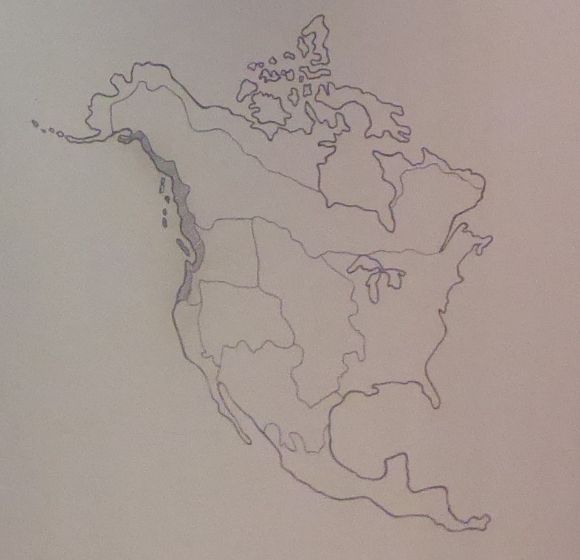 The shaded area on the map shown above shows the Northwest Coast culture area.
The shaded area on the map shown above shows the Northwest Coast culture area.
The northern province of the Northwest Coast includes the Tlingit, Tsimshian (Nisg’a), Haida, Haihai, and Haisla. The social structure of these tribes was rigidly organized and hierarchical. Writing about Northwest Coast art, Bill Holm, in his entry on art in the Handbook of North American Indians, says:
“This area was the seat of the development of the sophisticated art tradition that has dominated the common perception of Northwest Coast Indian art since the time of first European contact.”
The Maryhill Museum of Art near Goldendale, Washington has a collection of Northern Northwest Coast baskets on display. According to the Museum display:
“In the northern part of the Northwest Coast, slit spruce root was used to make baskets decorated only with colored bands or patterns of raised ‘skip stitch.’ These baskets were made by several northern tribes and are difficult to distinguish tribally.”
Tsimshian
According to the Museum display:
“Although the Tsimshian made utilitarian baskets, this style was made for sale. The butterfly pattern and wavy rim are features drawn from Euro-American sources. These baskets are twined of cedar bark, with designs of false embroidered grass.”
Tlingit Baskets
According to the Museum display:
“The Tlingit used split spruce root to make finely woven twined baskets. They were decorated with false embroidered designs, often arranged in horizontal bands. Cylindrical shapes were common, both with lids and without. Some lids were made with a built-in rattle, a small space in the lid which held pebbles. Small baskets were often woven in an openwork style that the Tlingit called ‘eyehole.’ This was made by crossing the warps with each row of twining. The ‘eyehole’ stitch was usually alternated with bands of false embroidery.”

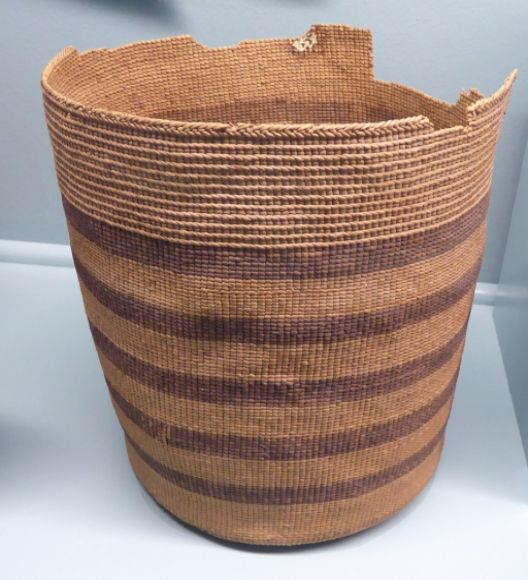
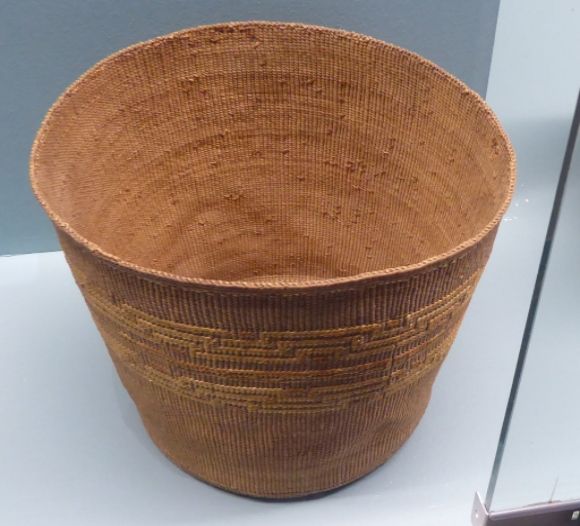
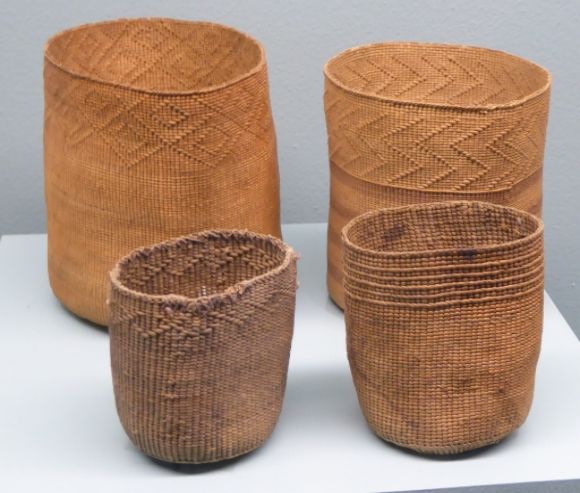
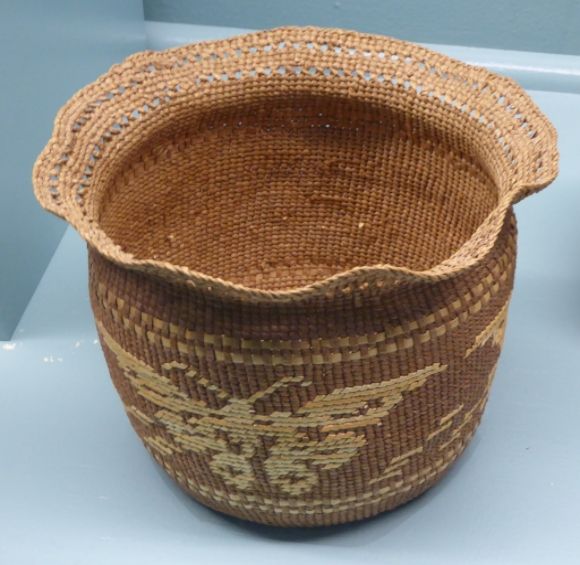
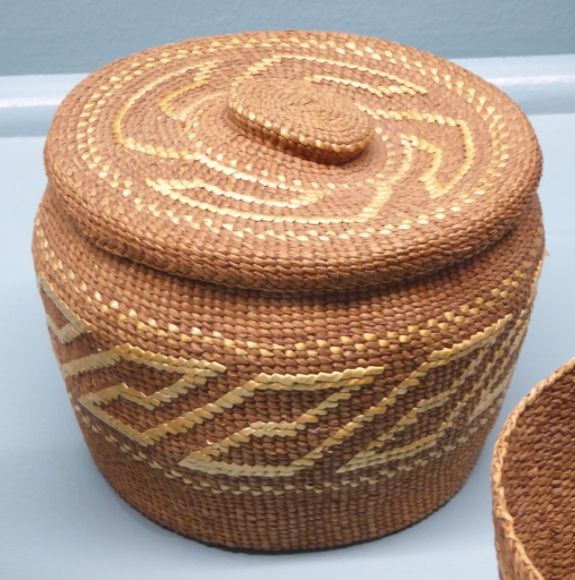
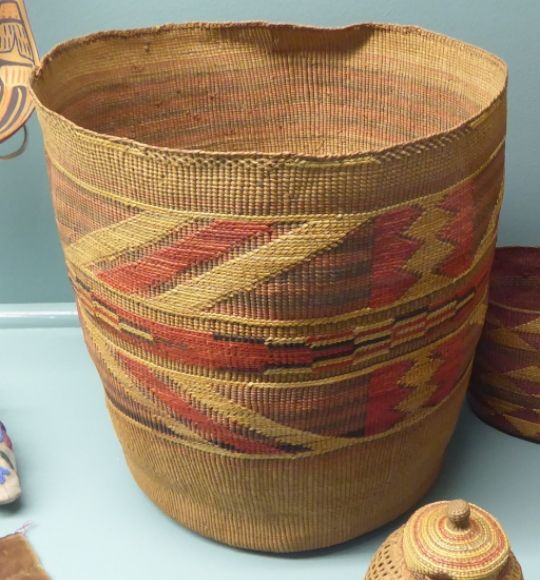
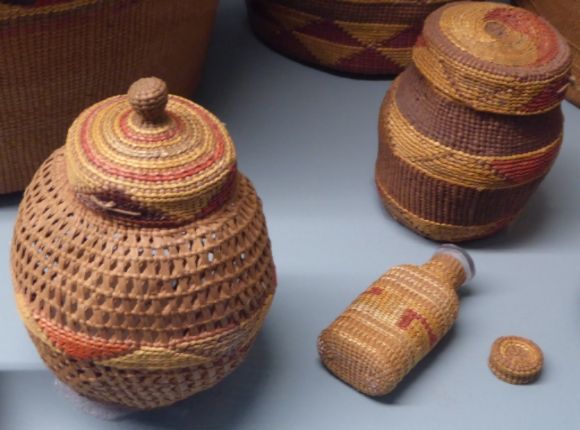
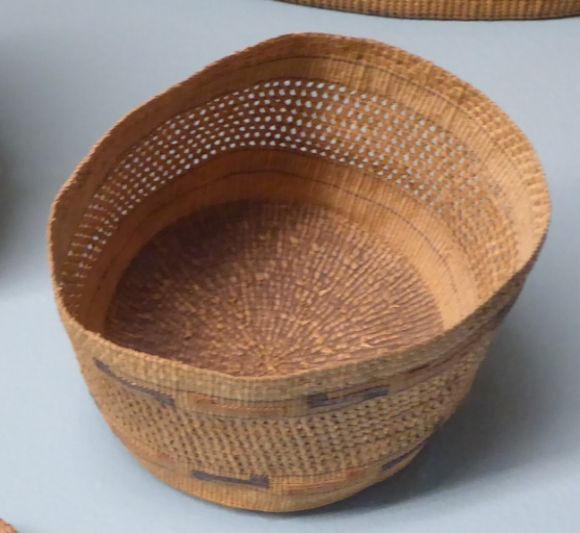
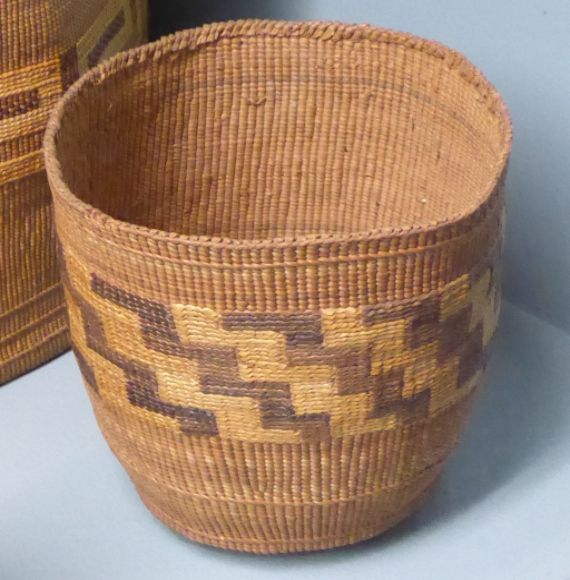

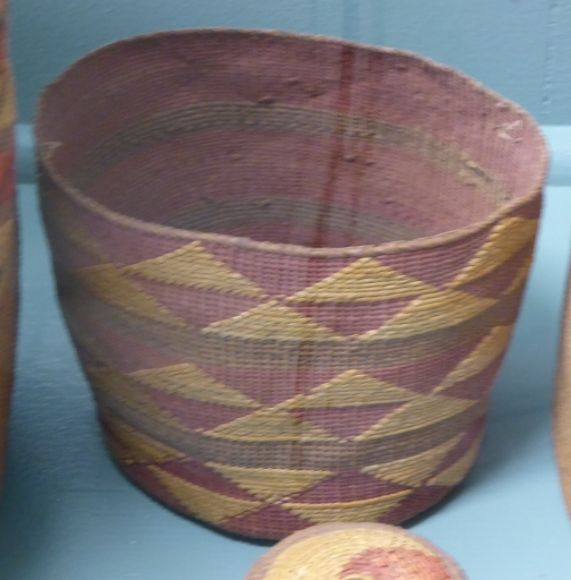
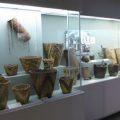
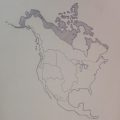

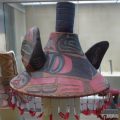
Leave a Reply